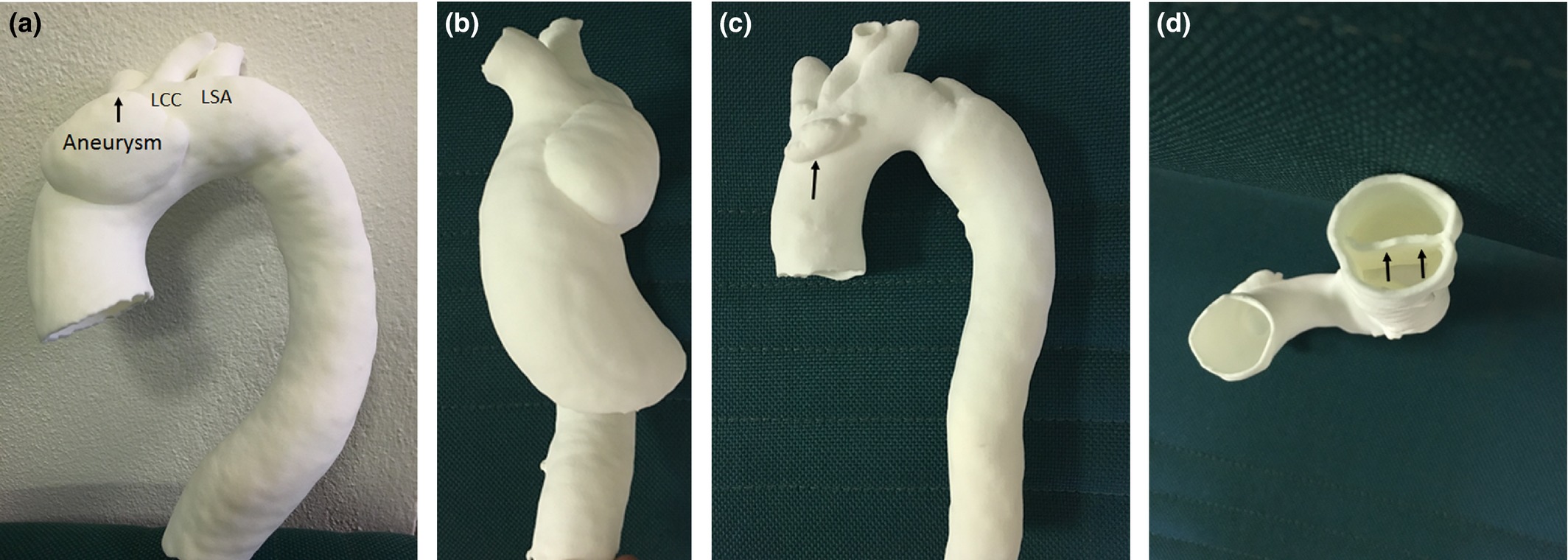Aorta probably is the most critical structure in the entire circulatory system. (apart from the heart of course !) It is a 1.5 to 2.5 mm thick tube, with a diameter of 2.5 cm/length of 30 -35 cm from the aortic valve to the iliac bifurcation.(Eric Borsero 2011) It handles about 7500 liters of blood every day. Understanding the Aortic pathology has vastly improved at the molecular level with deep gene sequencing that defines fibrillin phenotypes. Meanwhile, CT , 4D MRI and 3D prototyping have landed us in a new era where we can feel the exact models of a patient’s virtual aAorta for monitoring and treatment purposes.

Image source https://doi.org/10.1002/jmrs.212
While acute Aortic syndromes is the one that bothers us most, even chronic aortic enlargements are equally risky as at any time it can become acute. Though the risk of aneurysm and rupture is related to the histology and molecular disruption at the level of aortic media, we can only rely easily on is its dimension. Traditionally we bother about the diameter since it is the aortic radius that Influences the stress through to Laplace law.(Wall stress equals twice the radius /Thickness of wall)
The annulus is the narrowest part, it gains about 50% width (10mm) at the level of the sinus of Valsalva to reach about a maximum of 35 mm and again narrows at ST to a junction (almost to the same diameter of the annulus) It continues further as ascending, arch and descending aortas with gradual tapering.
Risk of rupture

Katherine H.Chau et all https://doi.org/10.1016/j.pcad.2013.05.007
Are you aware aorta keeps growing with age?
Unlike many other organs, growth of which gets arrested by adulthood, aorta appears to grow well into middle and elderly age.The aorta grows by 6cm in total length between age 20 to 80 (Ref 1) The average growth of the ascending aorta is .18mm /year
This fact was reported 70 years ago Dotters famous study Circulation 1950 https://www.ahajournals.org/doi/pdf/10.1161/01.CIR.2.6.915
I used to wonder in many elderly why chest x-ray shows wide superior mediastinum still echocardiogram didn’t show any dilatation.This we call it as aortic unfolding. The term unfolding of aorta may represent the elongation of both ascending and descending aorta. The mechanism is due to multiple factors, like lax ligamentous of aortic attachment, dilatation, and longitudinal elongation.
Unfolding of the aorta . (How to measure unfolding Lee JW, (2014) Aortic Unfolding Determined Using Non-Contrast Cardiac Computed Tomography: Correlations with Age and Coronary Artery Calcium Score. PLoS ONE 9(4): e95887. )
How Important is the length of the aorta?
Risk of Aortic aneurysm is usually attributable to the diameter (Accepted normal 2.1cm/m2) . However, in IRAD registry, 50 % of aortic dissection happened in aortas less than 5 cm. So there is something more than the diameter that confers the risk of an aortic event. Is it the length and elongation? After years of observation, we now realize it is indeed true. It is a surprise we didn’t realize elongation of aorta also confers the same aortic wall weakness like that of Increased diameter (Longitudinal deformation/Stretch )
How to measure the length of Aorta?
It is best measured by CT scan or MRI. There is a new parameter called Wu Index, which is based on both length and width of the aorta , which predicts the risk of aortic event.
Final message
Aneurysm of the aorta is traditionally defined based on the degree of dilatation. It’s time, Aortic length should also be included in defining aortic aneurysm. We need to monitor it periodically as well in the population at risk.
Reference






